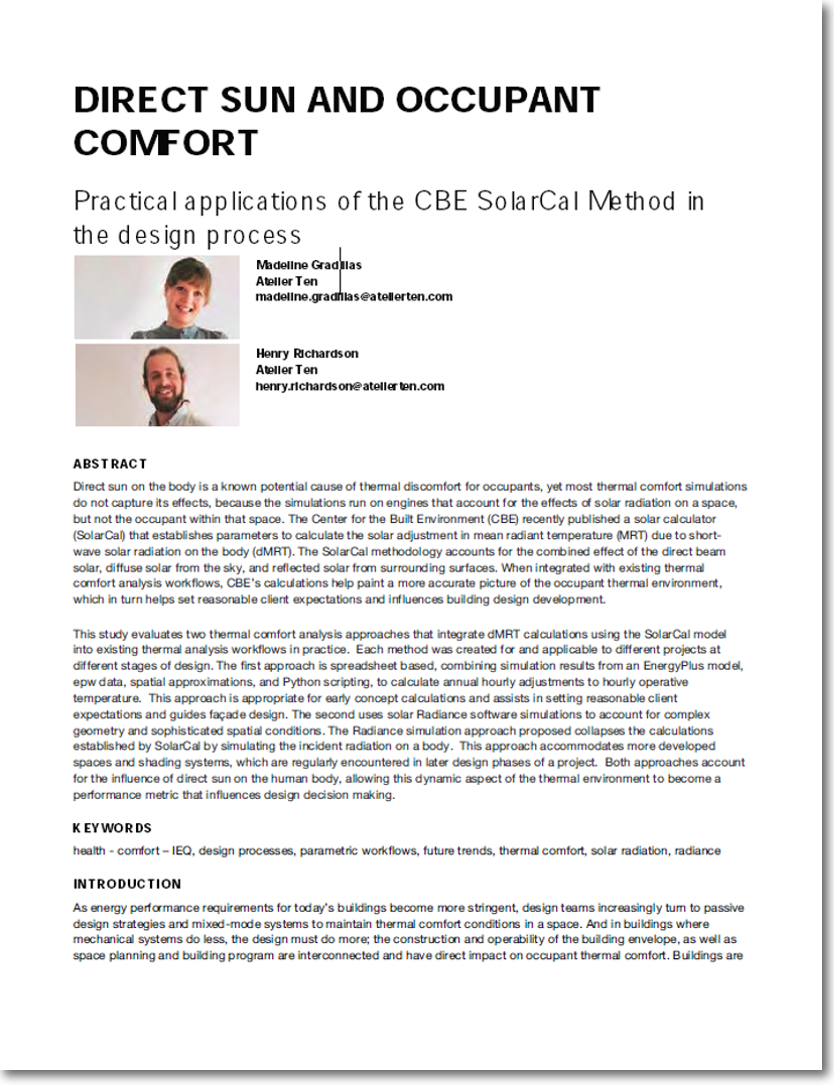Direct Sun & Occupant Comfort
Practical applications of the CBE SolarCal Method in the design process
Role: Author
Co-Author: Madeline Gradillas
Direct sun the body is a potential cause of thermal discomfort, yet most thermal comfort simulations do not capture its effects, because the simulations run on engines that account for the effects of solar radiation on a space, but not the occupant within that space. The Center for the Built Environment (CBE) recently published a solar calculator (SolarCal) that establishes parameters to calculate the solar adjustment in mean radiant temperature (MRT) due to shortwave solar radiation on the body (dMRT). The SolarCal methodology accounts for the combined effect of the direct beam solar, diffuse solar from the sky, and reflected solar from surrounding surfaces. When integrated with existing thermal comfort analysis workflows, CBE’s calculations help paint a more accurate picture of the occupant thermal environment, which in turn helps set reasonable client expectations and influences building design development.
This study evaluates two thermal comfort analysis approaches that integrate dMRT calculations using the SolarCal model into existing thermal analysis workflows in practice. Each method was created for and applicable to different project at different stages of design. The first approach is spreadsheet based, combining simulation results from an EnergyPlus model, epw data, spatial approximations, and python scripting, to calculate annual hourly adjustments to hourly operative temperature. This approach is appropriate for early concept calculations and assists in setting reasonable client expectation and guides façade design. The second uses solar Radiance software simulations to account for complex geometry and more sophisticated spatial conditions. The Radiance simulation approach proposed collapses the calculations established by SolarCal by simulating the incident radiation on a body. This approach accommodates more developed spaces and shading systems, which are regularly encountered in later design phases of a project. Both approaches account for the influence of direct sun on the human body, allowing this dynamic aspect of the thermal environment to become a performance metric that influences design decision making.
Presented at: Facade Tectonics 2018 and DIVA Day 2017
